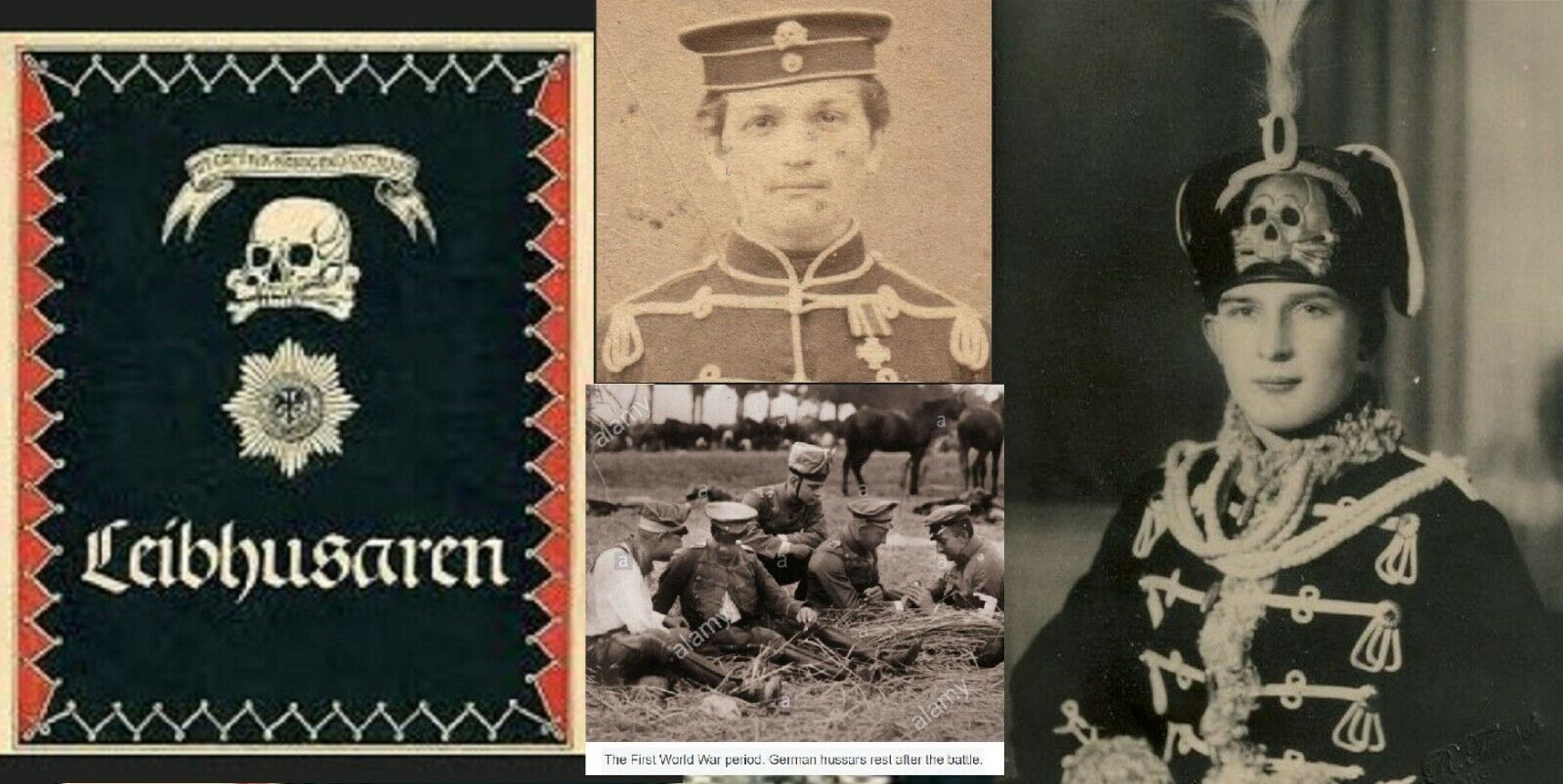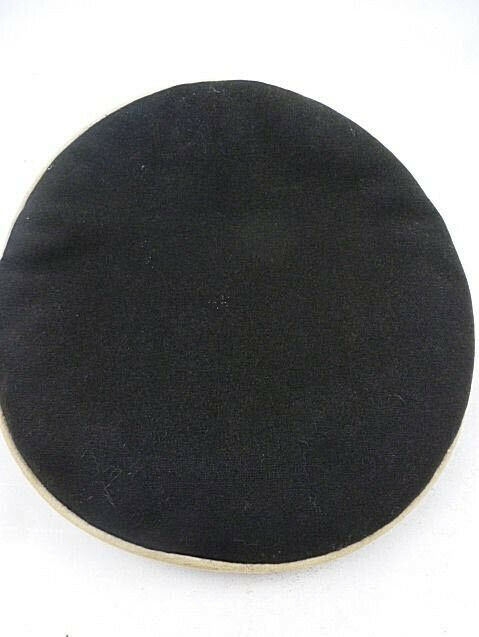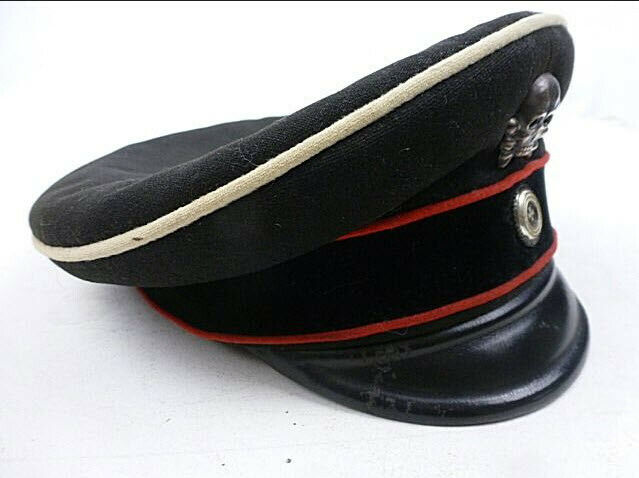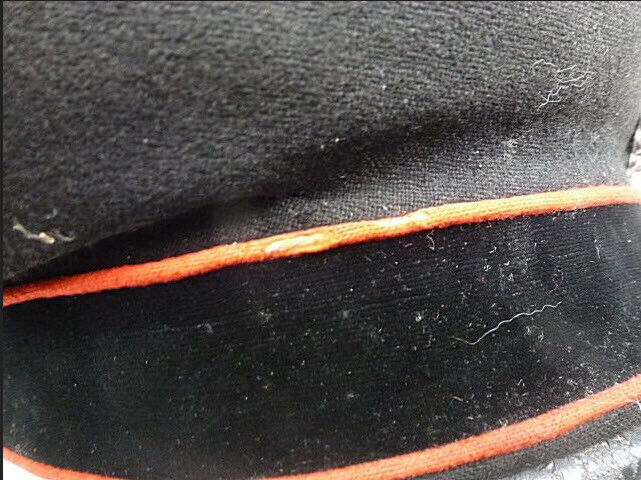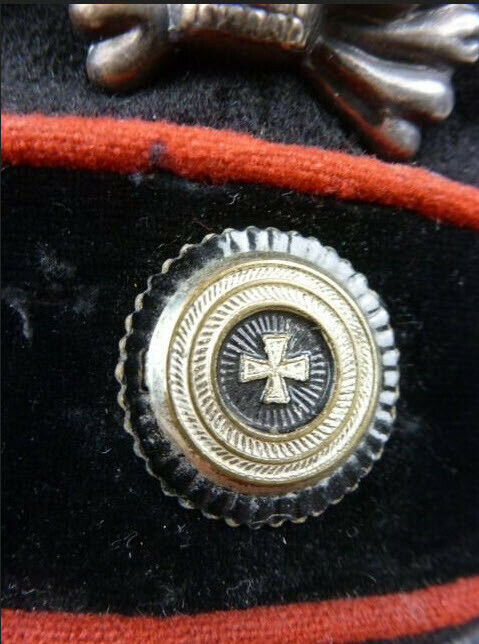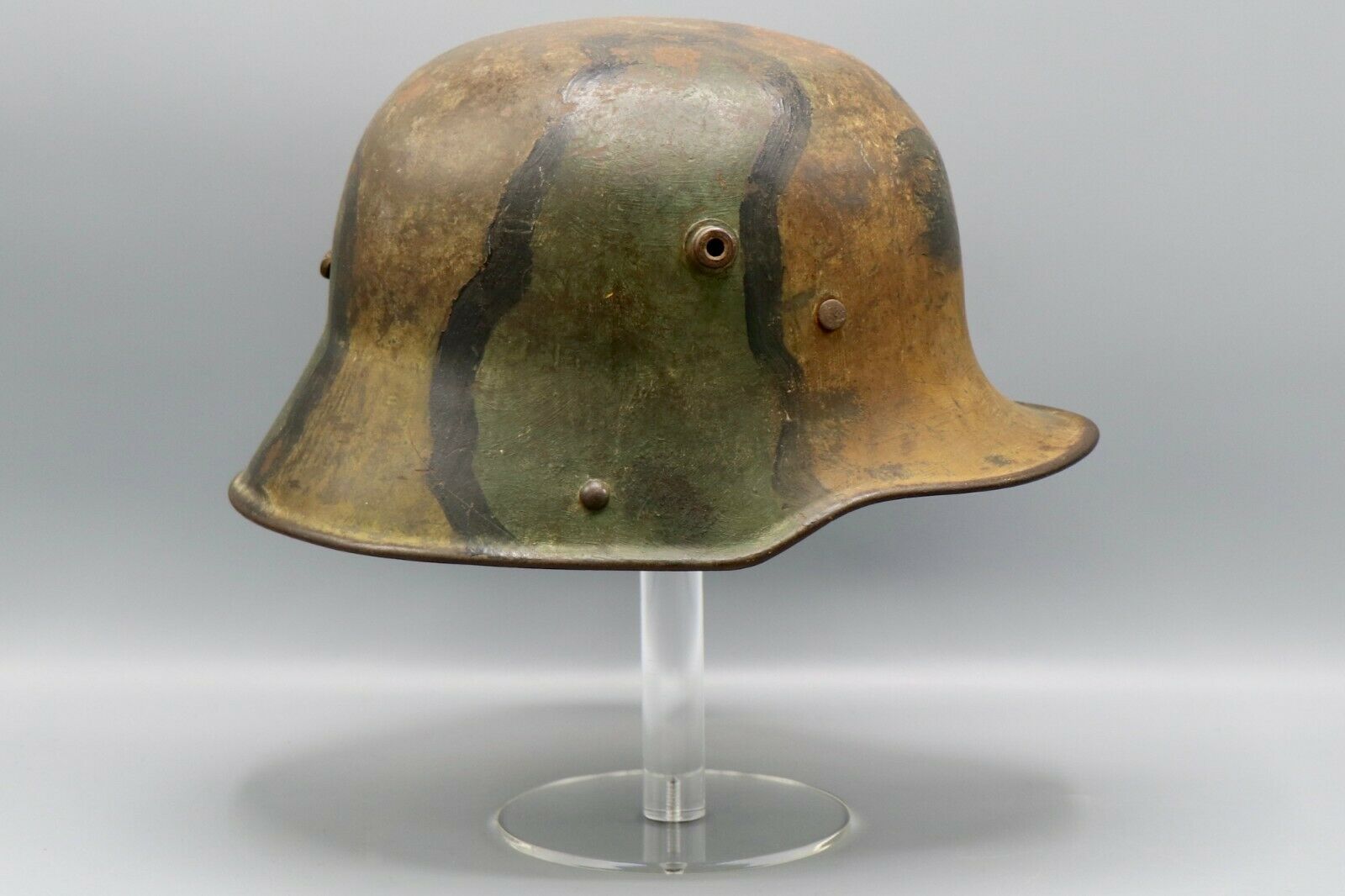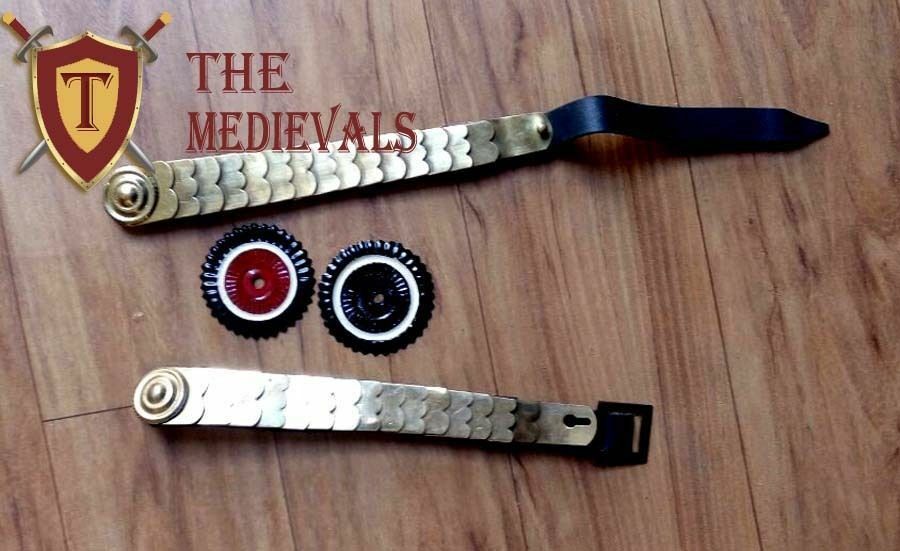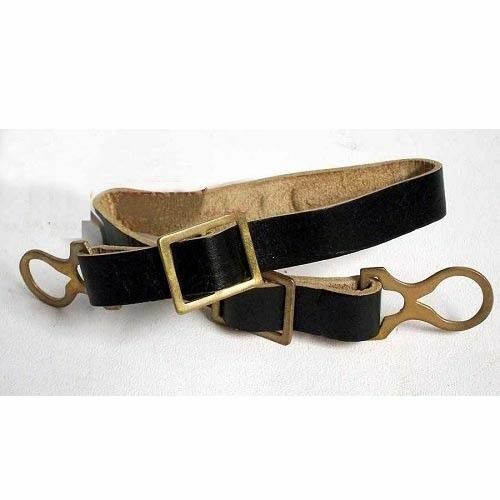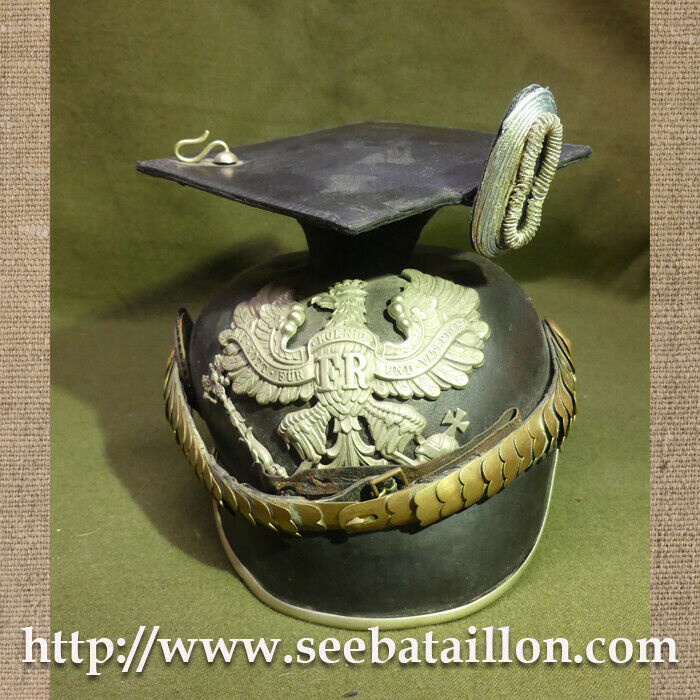-40%
RARE 1900 IMPERIAL GERMAN BLACK LEIB HUSAREN DEATH HEAD HUSSAR REGIMENT HAT SS A
$ 474.14
- Description
- Size Guide
Description
RARE 1900 IMPERIAL GERMAN BLACK LEIB HUSAREN DEATH HEAD HUSSAR REGIMENT HAT SS A.This
Post Franco-Prussian War hat is 100% wool from my collection and is dated to 1900 and has
very
few moth
issues
being over 120 years old. It is for a German Officer of the German Black Hussars
Cavalry Death Heads
Leib-Husaren-Regiment
Unit. It features the Death Head with Cross Bones of the these Hussars and the Iron Cross that was awarded the Regiment Collectively during the Franco-Prussian War. Extremely rare and much rarer then any later made SS hat who copied them. They wore all black and also wore the Death Head with Crossed Bones. The later body guard known as the
Allgemeine
SS
much later 100% copied their all black uniform color and insignia. The Allgemine SS also made an exact 100% copy of this German Hussar unit's skull and crossbones attachment on their early hat's and this one also bears the highly coveted Iron Cross on the brim which was awarded to the unit as a whole during the Franco Prussian War. The Prussian Emperors loved to wear the regalia of their favorite regiment which was the Black Death Head and Crossbones Hussars of their personal body guard of the all Black Death head Prussian Hussars Life Guards.
The Kaiser's favorite regiment, stationed in Potsdam, was the Hussars of the Life-Guard. This Brigade of the Emperors Life-Guard, or Death's Head, Hussars, were famous Prussian troopers who wore the emblem of the skull and crossbones (Totenkopf) on their black caps.
This hat is about 1000 times more rare then most SS hat's. It is actually the only one I have ever seen that is not a copy. You can by copies of this hat for 0 on the internet but mine is the real deal for a little more and it is well over a 100 years old. My original here for sale is 8 plus shipping.
The Black Dearth head Hussars was created in 1741 by King Frederick II as 5th Husaren (Hussars) Regiment it was also called Schwarze Husaren Regiment (Black Hussar Regiment). In 1808, the regiment was divided into 1. Leib-Husaren-Regiment and 2. Leib-Husaren-Regiment. The 1. Leib-Husaren-Regiment stationed in Danzig. In 1861, the first regiment was officially called 1. Leib-Husaren-Regiment Nr. 1. Together with 2. Leib-Husaren-Regiment Königin Victoria von Preussen created Leib-Husaren-Brigade.
This hat of mine is dated to 1900 and the red piping is for the Hussar
Cavalry in this instance and not artillery. During WWII , the commander of this group sent a petition to Hitler asking him to name their unit after the Napoleonic War hero
"
Gebhard Leberecht
von
Blücher
"
who
helped
Wellington
to defeat Napoleon at Waterloo. I have
attached
a copy of
that
memo as well.
This hat is so extremely rare, I seriously doubt that you will ever be able to find a nicer one in this much nicer style for sale anywhere for the rest of your life. That is also if you have every dealer in the world looking for one for you and not just looking for one yourself. They are that rare. You will find a hundred SS hats before you (might) find another one of these for sale and to find another in this beautiful style will be another issue. For the most part, only copies are available these days and any real ones are already in Museums or in the collections.
Death's-Head Totenkopf
Death's-heads - the skull and cross-bones - have been used as military devices in Germany. At the outset of the Thirty-years War there were Bavarian troopers called Invincibles, with black horses, black clothing, and on their black helmets a white death's head ; their leader was Kronberger, and fortune favored them till Swedish Baner met them in Mecklenburg, March 1631. In more recent times there were Lutzow's Volunteers and the Black Jaegers.
Frederick the Great had a regiment of Death's-head Hussars. The device was adopted by the Prussian "Black Hussars" ("Death's-Head Hussars"), who were brought into existence by Frederick the Great in 1741. They wore a black uniform and a Death's-head instead of a cockade. The "Black Brunswickers," raised in 1809 by Friedrich Wilhelm, Duke of Brunswick-Oels (killed at Quatre-Bras, 1815), were likewise given a black uniform with a Death's-head as their badge, partly, it is said, as a token of mourning for the previous duke, who was mortally wounded at the battle of Auerstadt (October 14, 1806), in the war against Napoleon.
At the time of the Great War, three Prussian regiments, the Black Brunswickers and the Black Hussars, continued to wear a Death's head device. Besides these the 21st Battalion of Chasseurs of the Reserve in the German Army received permission in 1915 to place skulls on its nags and on the headgear of the soldiers, on account of their work "in breaking through the Russian lines near Lodz" during the Great European War of 1914.
The famous Italian condottiere, Giovanni de' Medici (1498-1526), called "Giovanni delle Bande Nere," was popularly given this title on account of the sombre mourning dress worn by his terrible bands of mercenaries after the death of his kinsman, Pope Leo X (1521). According to another account, the "Bande Nere," which Giovanni founded, were so called only after the death of their founder, when they changed their uniform from white to black, in token of grief.
In France a skull and crossed bones constituted the badge of the 9th Regiment of Hussars, which was formed in March, 1793, out of the second corps of "hussards noirs du nord." The device was apparently copied from that of the Prussian Black Hussars. The English 17th Lancers wqar as a badge on their head-dress and collar a skull and crossed bones, with the words "or glory " below, suggesting that the wearers of the badge are the "brave, who rush to glory or the grave" (Thomas Campbell, Hohenlinden). The object of this device (" Death or Glory "), which was introduced at the suggestion of Lieutenant-Colonel John Hale in 1759 (who was Lieutenant-Colonel Commandant of the newly formed corps), was to create emulation, and to commemorate the glorious death of General Wolfe at Quebec (1759). The 17th Lancers wear a similar device, cross-bones and a skull, on their appointments. To them it meant "Death or Glory," the death of the wearer, not the death of helpless women and children standing in the path of Hohenzollern ambition, nor their mutilation and torture.
The feeling was that of the Spartan band under their King Leonidas had who fell at Thermopylae (480 B.C.), and was well illustrated by the epigram of Simonides in the Greek Anthology (vii. 249) on the fallen heroes (English version by Bowles):-
" Go tell the Spartans, thou that passest by,
That here, obedient to their laws, we lie."
Lord Neaves writes: " This Spartan obedience, which Simonides long ago celebrated, is that virtue which will in all times gain the ascendant both in war and in peace." With such epigrams may be compared others in the Greek Anthology, on the extreme patriotism of Spartan mothers. Amongst those quoted on this subject by H. P. Dodd,224 one by Dioscorides (Anth. Grace. Palat., vii. 434, English version by Goldwin Smith) may specially be noted:-
"Eight sons Demaenaeta at Sparta's call
Sent forth to fight; one tomb received them all.
No tear she shed, but shouted, ' Victory !
Sparta, I bore them but to die for thee.'"
"We are strong," said Napoleon, "when we have made up our minds to die "; but yet, victorious fighting and life are more valuable in a war than martyr-like death, and so it is not really surprising that words such as, "Pro patria mori, vivere est," "Dulce est pro patria mori".
The Kaiser's favorite regiment, stationed in Potsdam, was the Hussars of the Life-Guard. The Brigade of Life-Guard, or Death's Head, Hussars, were famous Prussian troopers who wore the emblem of the skull and crossbones (Totenkopf) on their black caps.
In Greek mythology Nemesis personified the moral law which chastises arrogance and wanton excess by the inexorable consequences of their own wrong-doing. So none who had offended could escape her. The Death's-Head Hussars were a perfect example of that boastful pride and transgression of the bounds of due proportion which it was the function of Nemesis to punish. By their name and their device they make a mock of the most solemn tragedy - of Death itself. Whether their emblem threatened death to others or signifies their own contempt for death it is a wanton and arrogant jest. The skull and cross-bones were the traditional device of pirates, and it well became those grim outlaws who declared a ruthless war against all mankind. There was no jest about it, but a dreadful seriousness, and their proper end was the yard-arm. But the Death's-Head Hussars were what is called a "crack" regiment, one officered by rich, aristocratic, and elegant young men, who have not set themselves against the world, but were very much of it. Nor were they any braver or more formidable than other regiments. To some the Death's-Head business was a silly and boastful affectation.
His Imperial and Royal Highness Friedrich Wilhelm Victor August Ernst Hohenzollern, the Crown Prince of Prussia was best known to most people outside Germany as Little Willie, a slender youth with a long nose and no chin. He was seen in most of his photographs dressed as a Death's Head Hussar, and caricaturists generally drew him in that uniform, which suited his long and lanky fignre. At eighteen he "came of age" and assumed the Royal and Imperial dignities and precedence, and in the same year (1900) was made a Lieutenant in the 1st Foot Guards, served three years in that rank, became a Cavalry Captain for four years, and a Major for six. His name appeared on the lists of eleven or twelve different German regiments, and he also belonged to the llth Spanish Dragoons. Up to the outbreak of the Great War he could be described as a keen regimental soldier up to a certain point. He was advanced to the command of the Death's Head Hussars at Danzig. Without any real knowledge of war he was quickly jumped up in rank from commander of a cavalry regiment to lieutenantgeneral, and given command of the largest group of army-corps.
The Kaiser's mother, the Empress Frederick, was once Colonel of the Death's Head Hussars. Princess Victoria Louise, the Crown Prince's sister, became Colonel of the regiment at the age of seventeen, a few days after her confirmation, and on that occasion the Kaiser, with his usual conception of tactless humor, distinguished himself by remarking to her English governess that, as Colonel, the Princess would ride at the head of the regiment with the army that invaded England.


